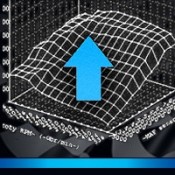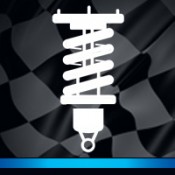
The top-of-the-line engine for the Vectra is the 2.8 litre unit, newly developed by GM Powertrain, with numerous high-tech features. The turbo unit shares many of these features with the two six-cylinder naturally aspirated engines (2.8 and 3.6 litre), which are also part of the new fully aluminium range, used worldwide by General Motors. As well as a classic cylinder angle of 60 degrees and overhead camshafts driven by dual chains, common features with the 24-valve unit include variable valve control and a four-bearing crankshaft made from micro-alloyed forged steel - a material also commonly used in racing engines.
Details such as friction-reducing coated pistons highlight the extensive design work that went into the V6 engines. The pistons are equipped with hard anodized ring slots for a longer life cycle, run in cast iron bushes and are oil-spray cooled. Sintered connecting rods, exhaust valves filled with sodium for better cooling, and the oil sump, which is especially rigid due to its die-cast aluminium construction, also represent state-of-the-art technology.
The twin-scroll turbocharger is reserved for the 9.5:1 compression ratio top-of-the range unit for the Vectra. The intercooler system, which is centrally mounted above the transmission, has an integrated waste gate and supplies the engine with a maximum of 0.6 bar excess pressure. The turbine wheel is made of a high-quality special steel composition. Due to its twin-scroll design, the turbine is fed simultaneously from both rows of cylinders. Separate channels, one for each bank of cylinders, separate the exhaust gas pulses. On the one hand, this operating principle minimizes turbocharger energy losses and, on the other hand, it has a positive effect on the exhaust gas flow and efficiency. Rapid response and excellent torque even at low engine speeds are also provided by the continuous, electronically controlled, hydraulic phasing of the inlet camshafts. They can be adjusted over a range of 50 degrees with respect to the crankshaft, in order to optimally vary the valve timing and thus optimize the charge cycle to suit the engine load and speed. Like the outlet shafts, the inlet shafts are also made from high-strength aluminium. This makes them particularly light, heat-resistant and durable.
Along with the turbocharger response, the rapid and smooth power development is mainly thanks to the 32-bit Bosch Motronic engine management system. The control unit software, which has been specially adapted to suit the Vectras, controls all key functions such as ignition timing, fuel injection, turbocharger pressure, air mass measurement and the throttle valve position. Like the technical data, the new engine’s power development is also impressive. The 2.8 litre unit provides 90 percent of its 330 Nm (245 lb ft) maximum torque at only 1500 rpm. This top figure in its displacement class is then available over a wide range of 1800 to 4500 rpm. The engine’s driving performance is equally impressive. Early Vectra VXR models left the factory with 255 bhp and the later model years have had a revised management programme installed at factory to give 280 bhp.


















